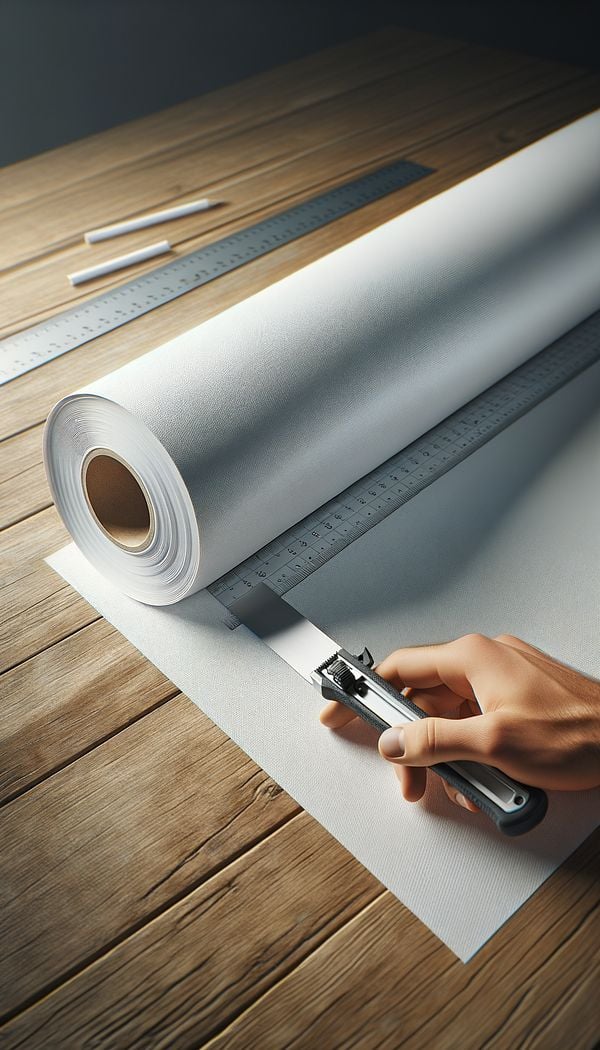What is Lining Paper?
Lining paper is a type of wallpaper used to create a smooth surface for painting or the application of decorative wallpaper.
Description
Lining paper plays a vital role in achieving a polished, professional finish in interior design projects. This type of paper is typically made from high-grade, thick paper and is applied to walls and ceilings before painting or the installation of decorative wallpaper. Its primary purpose is to cover imperfections, such as cracks, bumps, or small holes, ensuring a smooth and even surface that enhances the appearance of the final wall covering.
Applying lining paper can also improve the adhesion of paint or wallpaper, prevent shrinkage and seam splitting, and even offer a degree of insulation and soundproofing. Depending on the specific requirements of a project, lining paper comes in various grades, with higher grades offering thicker protection. Before applying, the walls or ceilings must be properly prepared, and the lining paper needs to be soaked in water or a specific adhesive, depending on the product instructions.
Using lining paper is particularly recommended in older buildings, where walls often show more signs of wear and tear. However, it's also beneficial in new constructions to ensure a flawless finish. By using lining paper, designers and homeowners can achieve a superior aesthetic result and increase the longevity of their wall treatments.
Usage
In a historic renovation project, lining paper was used to even out the walls of a century-old home before applying a luxurious silk wallpaper. This crucial step ensured that the wallpaper adhered smoothly without any visible imperfections. In another example, an interior designer recommended lining paper for a client's living room makeover to enhance the durability and appearance of an intricate mural painting.
FAQs
-
Can lining paper be painted over directly?
Yes, lining paper can be painted over directly. It's specifically designed to provide a smooth surface that can be painted, offering an improved finish compared to painting directly on wall surfaces.
-
Is lining paper necessary for all wallpaper applications?
No, lining paper is not necessary for all wallpaper applications. Its use depends on the condition of the walls and the type of wallpaper being applied. However, it's highly recommended for walls with imperfections or when using thin or delicate wallpaper.
-
How do I choose the right grade of lining paper?
The choice of lining paper grade depends on the wall's condition and the desired level of perfection. Higher-grade lining papers offer thicker protection and are better suited for walls with more significant imperfections.
Practical Application
Before applying lining paper, ensure the wall or ceiling surface is clean, dry, and free from any loose material. Properly measure and cut the lining paper to fit your wall dimensions, leaving a little extra for trimming. Soak the paper according to the manufacturer's instructions before applying adhesive evenly. Use a smoothing tool to apply the paper to the wall, ensuring there are no air bubbles or creases. Once the paper is in place and dry, proceed with painting or applying your chosen wallpaper.
-
PlasterPlaster is a building material used for coating, protecting, and decorating walls and ceilings.
-
Post-ModernismPost-Modernism is a diverse style and concept in interior design that emerged as a reaction to the strict rules of modernism, focusing on freedom of expression, eclectic influences, and a blend of historical and contemporary elements.
-
WatercolorWatercolor is a painting method in which color pigments are suspended in water-based solutions.
-
GlazeGlaze is a coating applied to surfaces for decorative or functional purposes.
-
DamaskDamask is a woven fabric known for its intricate patterns and quality.
